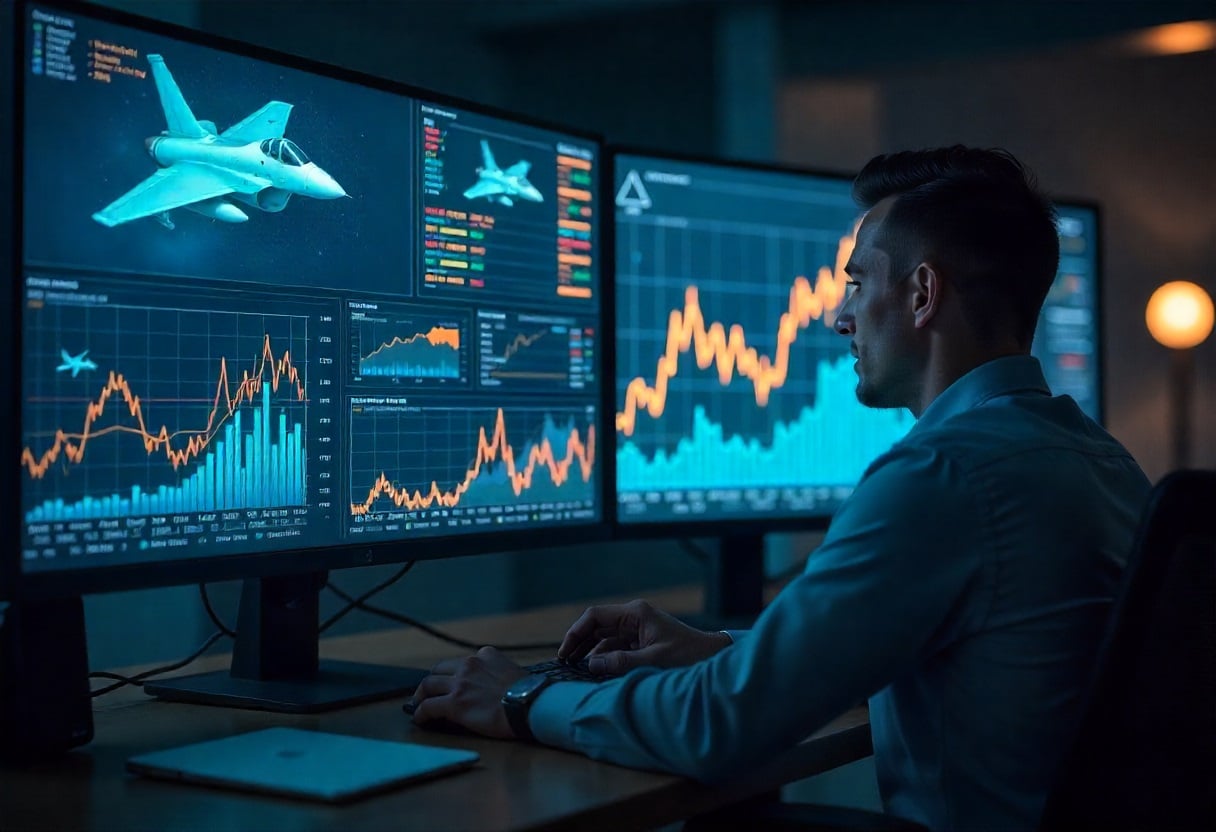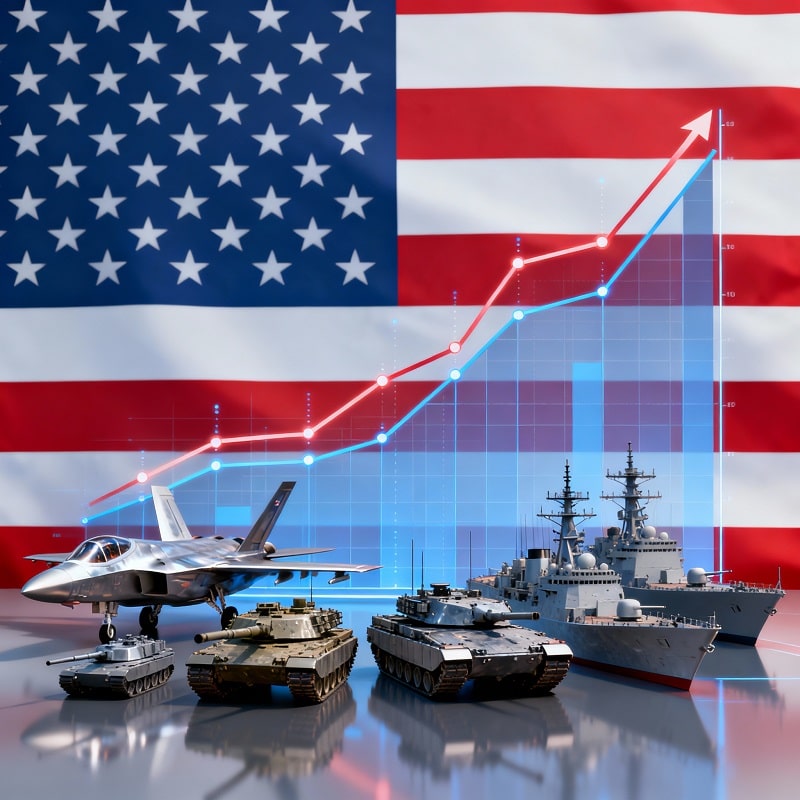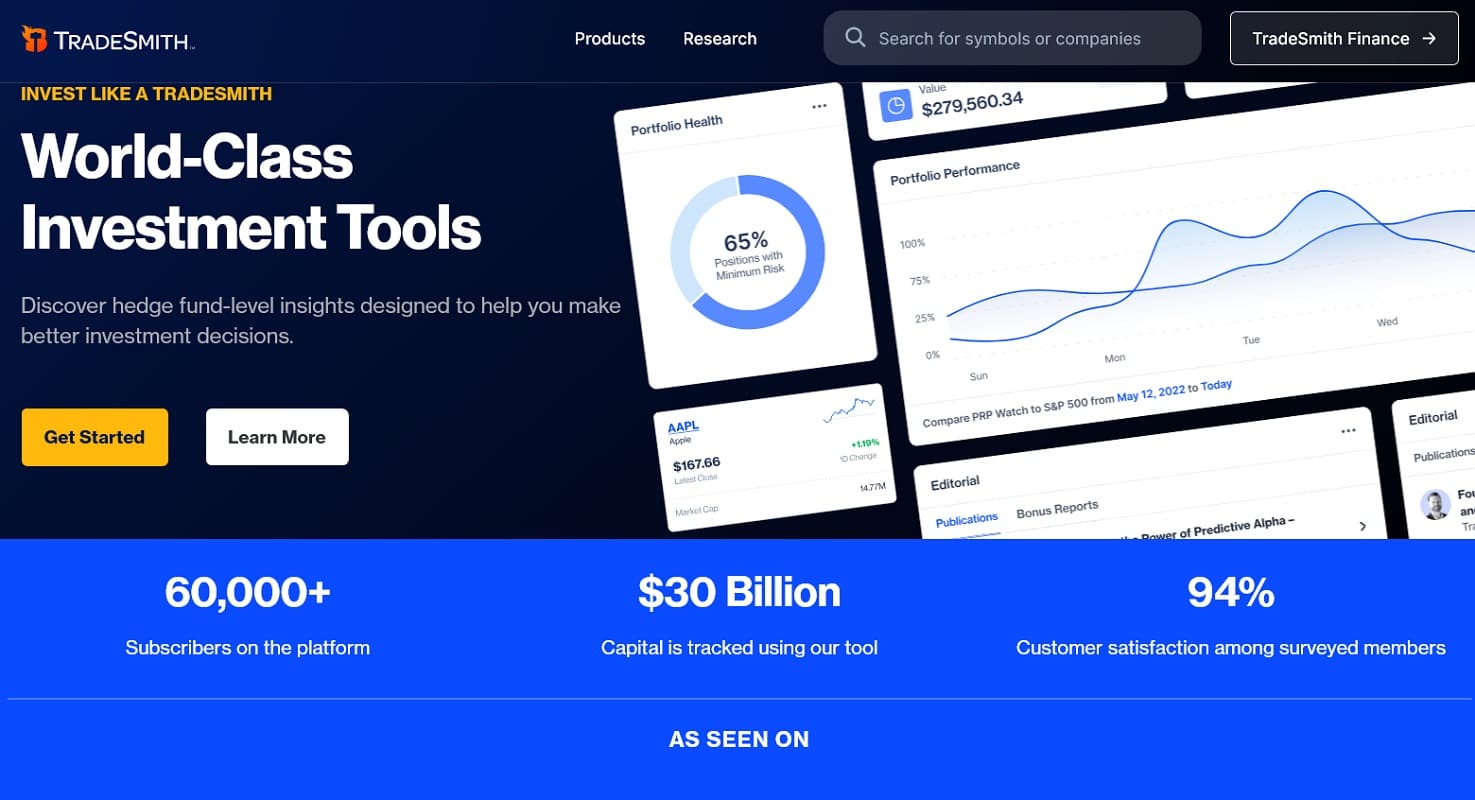Every investor watches the Fed, inflation data, and earnings reports — but one of the most overlooked market catalysts is sitting right inside the halls of Washington: U.S. defense spending.
Key Takeaways
-
Defense budgets drive innovation: U.S. defense spending fuels growth across AI, cybersecurity, aerospace, and robotics — creating new investment opportunities.
-
AI defense is the next frontier: Billions are flowing into AI-driven surveillance, battlefield intelligence, and autonomous systems.
-
Small-cap defense-tech firms are emerging winners: While giants like Lockheed and Raytheon still dominate, smaller AI-focused firms are capturing new government contracts.
-
Predictable profit cycles: Government contracts create recurring revenue streams that can outlast most economic downturns.
-
Strategic insight matters: Services like Money & Power’s Manhattan 2 Project track where real Pentagon dollars are flowing — helping investors get ahead of the trend.
Every Budget Cycle Shifts Billions
Every fiscal year, Washington rewrites the map of American industry — not through speeches or elections, but through budget allocations.
Each line item in the U.S. defense budget represents billions in capital that will flow into the private sector. Those funds determine which companies will thrive, what technologies will define the future of warfare, and ultimately — which investors will profit.
The U.S. Department of Defense now commands an annual budget exceeding $800 billion, and that number continues to climb amid rising global tensions. But this isn’t your grandfather’s defense industry. The focus has shifted from tanks and jets to artificial intelligence, cybersecurity, drones, and next-generation communication systems.
These technologies are reshaping modern defense — and creating a new class of investable companies at the crossroads of national security and innovation.
For investors, the takeaway is simple: When Washington commits to protecting the country, it also commits to funding the next wave of technological breakthroughs.
Which Sectors Benefit Most from Pentagon Spending
The defense budget doesn’t rise and fall randomly. It reflects decades-long strategies shaped by global threats and technological evolution. Knowing where those funds are headed is like seeing the market’s playbook in advance.
1. Artificial Intelligence and Autonomous Systems
AI isn’t just changing consumer apps and office productivity — it’s redefining how the Pentagon operates.
From predictive logistics and decision-making to autonomous drones and battlefield analytics, artificial intelligence is now considered a “strategic imperative.” Programs like the Joint Artificial Intelligence Center (JAIC) and Project Maven have paved the way for deep collaboration between Silicon Valley and the U.S. military.
The Department of Defense has earmarked billions in new contracts for AI-based defense systems, including:
-
Real-time satellite intelligence analysis
-
AI-assisted targeting for autonomous drones
-
Predictive maintenance systems for vehicles and aircraft
-
Automated threat recognition
Companies like Palantir Technologies, Anduril Industries, and smaller AI analytics startups have already landed significant government deals — and more are expected to follow.
Investor insight: The firms supplying AI capabilities to the Pentagon today could become the next generation of “defense blue chips.”
2. Cybersecurity and Data Infrastructure
The battlefield of the future isn’t always physical — it’s digital. Cyberattacks have already replaced missiles as the first line of offense in geopolitical conflict.
That’s why the Pentagon’s cybersecurity spending has more than doubled in the past decade, topping $13 billion annually and rising.
These funds are being used to secure communication systems, protect classified networks, and build data infrastructure that can withstand attacks from state-sponsored hackers.
Publicly traded companies like CrowdStrike (CRWD), Fortinet (FTNT), and Palo Alto Networks (PANW) are already benefiting from this spending trend. But the real upside may lie with mid-cap and small-cap innovators — firms developing niche solutions for government encryption, post-quantum security, or battlefield data management.
Investor insight: Cybersecurity firms aligned with defense contracts often enjoy long-term, recurring revenue streams and government-backed protection against market downturns.
3. Drone Technology and Aerospace Innovation
In 2025, drones are no longer just surveillance tools — they are autonomous, networked, and in some cases, weaponized platforms.
The Pentagon has dedicated tens of billions of dollars toward developing “attritable” drone fleets — affordable, disposable aircraft designed for high-risk missions.
This spending supports companies working on:
-
AI-driven drone coordination
-
Lightweight, high-durability materials
-
Real-time cloud communication systems
Smaller players like AeroVironment (AVAV) and Kratos Defense (KTOS) have become early beneficiaries, often landing contracts in niches overlooked by aerospace giants.
Investor insight: Drone technology sits at the intersection of AI, robotics, and defense — making it one of the fastest-growing and most investable military subsectors.
Past Defense Winners vs. Today’s Smaller Players
When investors think of defense, they usually picture Lockheed Martin (LMT), Raytheon (RTX), or Northrop Grumman (NOC) — the titans of traditional military contracting.
And it’s true — these companies have delivered dependable returns for decades. For instance:
-
Lockheed Martin has seen its stock rise nearly 90% in the last 10 years, supported by multi-decade F-35 fighter jet contracts.
-
Raytheon Technologies continues to secure large-scale missile and radar system deals.
-
Northrop Grumman leads in stealth technology and advanced space defense.
But here’s the turning point: The defense industry is undergoing a generational shift toward digital warfare and automation — a space where nimble, data-driven firms are beginning to outpace the old guard.
The Rise of “New Defense” Innovators
The new face of defense isn’t built around steel and jet engines — it’s built around algorithms and data.
Startups like Anduril Industries (founded by Oculus co-creator Palmer Luckey) are reinventing border surveillance with AI-powered autonomous systems. Palantir Technologies (PLTR) has transformed how the military collects and interprets battlefield intelligence.
Even private-sector firms like Shield AI, Epirus, and Skydio are competing head-to-head with legacy contractors — and in many cases, winning.
This shift toward AI-first defense contractors signals an investment paradigm similar to what happened in the early days of the internet: small, agile tech firms capturing massive market share before the giants can pivot.
Investor insight: Defense is no longer just about hardware — it’s about software that scales.
Why AI Defense Is Different — and Riskier to Ignore
AI-driven defense represents the single most transformative — and potentially profitable — shift in U.S. military spending in decades.
It’s not just about improving weapons systems; it’s about decision superiority — who can analyze, react, and act first in a conflict.
The Pentagon’s goal is clear: integrate AI into every layer of defense, from logistics and communication to combat and intelligence.
That means demand for AI analytics, machine learning models, and data processing infrastructure will surge for years — regardless of who sits in the Oval Office.
How Investors Should View the Opportunity
Traditional defense contracts take years to fulfill and are limited by production capacity. But AI-based contracts are software-driven — they scale rapidly and often involve recurring licensing fees.
That makes them more capital-efficient, faster to grow, and higher-margin than conventional contracts.
This is the same formula that transformed the tech sector two decades ago — only now, the customer is the U.S. government, one of the most consistent spenders on Earth.
Investor insight: AI-defense firms are positioned for faster, compounding growth with less dependency on consumer cycles.
Global Tensions Are Accelerating the Shift
The world is entering a period of heightened military competition. Conflicts in Ukraine, instability in the Middle East, and tensions over Taiwan have created a global arms race centered on AI, drones, and cyber warfare.
In 2024 alone, global military spending hit a record $2.4 trillion. The U.S. accounted for nearly 40% of that figure — more than the next ten countries combined.
This isn’t just about defense. It’s about maintaining technological superiority.
The Department of Defense has already signaled that future wars will be won through data integration, autonomous systems, and real-time analytics. That’s why defense budgets aren’t being cut — they’re being restructured to prioritize technology.
For investors, that means this isn’t a cyclical opportunity. It’s structural.
Why This Matters for Everyday Investors
Many investors overlook defense because it seems slow-moving — dominated by government bureaucracy and legacy corporations. But that perception is now outdated.
New government programs like the Defense Innovation Unit (DIU) and AFWERX are streamlining how startups engage with military contracts, accelerating innovation like never before.
Smaller companies now have a direct path to multimillion-dollar contracts without the years-long red tape. This democratization of defense innovation mirrors what happened with the internet in the 2000s — and investors who positioned early then saw generational wealth creation.
Investor insight: The next defense boom won’t come from old war machines — it’ll come from algorithms, sensors, and data-driven strategy.
See How Money & Power’s Manhattan 2 Project Is Tracking This Trend
If you’re trying to figure out which companies could become the next defense-tech leaders, you’ll want to look at the latest research from Buck Sexton’s Money & Power team.
Their special research series, The Manhattan 2 Project, dives deep into how AI and defense spending are converging into a once-in-a-decade investment opportunity.
By tracking where real Pentagon dollars are flowing — not just what’s trending on Wall Street — they identify small firms positioned for exponential growth as defense budgets expand.
Whether you’re a short-term trader or a long-term investor, Money & Power’s Manhattan 2 Project provides data-backed insights to help you position ahead of the crowd.
FAQ: Investing in the U.S. Defense Boom
Is investing in defense stocks ethical?
Many investors struggle with this question. The reality is that defense innovation also drives civilian technology — from GPS and cybersecurity to AI applications that improve everyday life. You’re not investing in conflict; you’re investing in innovation and security.
Are defense stocks recession-proof?
Historically, yes. Defense budgets are among the most consistent government expenditures. During recessions, while consumer spending drops, defense contracts often remain intact — offering investors relative stability.
Which defense sectors have the most upside right now?
AI, cybersecurity, and drone technology. These are the areas seeing the fastest contract growth and private-sector crossover opportunities.
Do small defense-tech firms really stand a chance against giants like Lockheed Martin?
Absolutely. The Pentagon is actively encouraging partnerships with agile startups to accelerate innovation. Many of these smaller firms are landing first-time contracts worth hundreds of millions.
How can I identify the best stocks before they’re mainstream?
Follow government contract databases, RFP filings, and expert research like Money & Power’s Manhattan 2 Project. These sources reveal where funds are actually flowing — not just where the media spotlight is.
Final Thoughts
The next stock boom might not start in Silicon Valley or on Wall Street — it could start in Washington.
As defense spending transforms into a tech-driven ecosystem, the opportunities extend far beyond traditional contractors. AI, cybersecurity, and automation are reshaping how nations defend themselves — and how investors build wealth.
The U.S. government is already betting big on these technologies. The only question is whether you’ll position your portfolio to ride the same wave.
👉 Learn how Money & Power’s Manhattan 2 Project tracks these opportunities in real time and reveals the smaller, AI-driven defense firms poised to lead the next decade of growth.




































